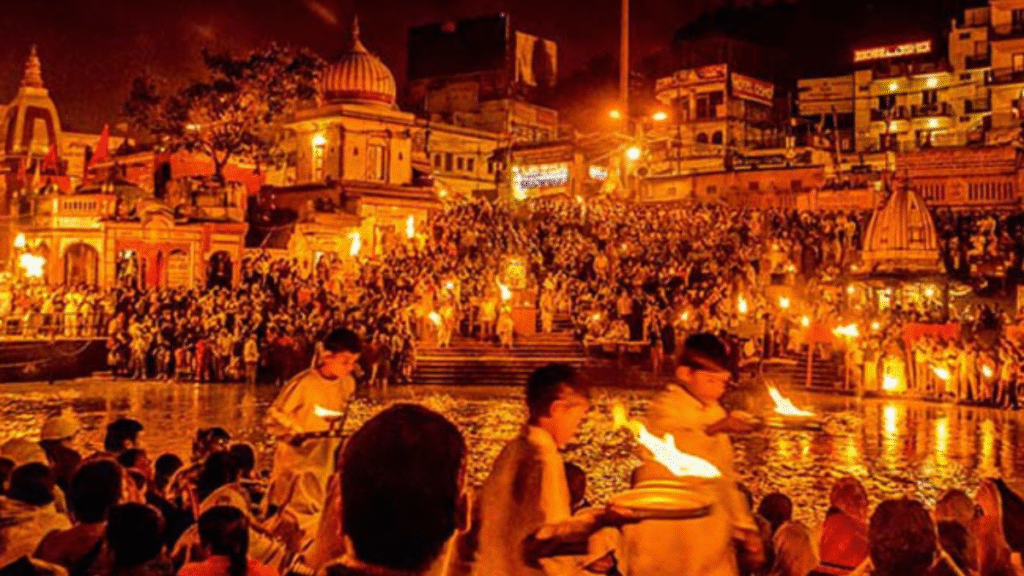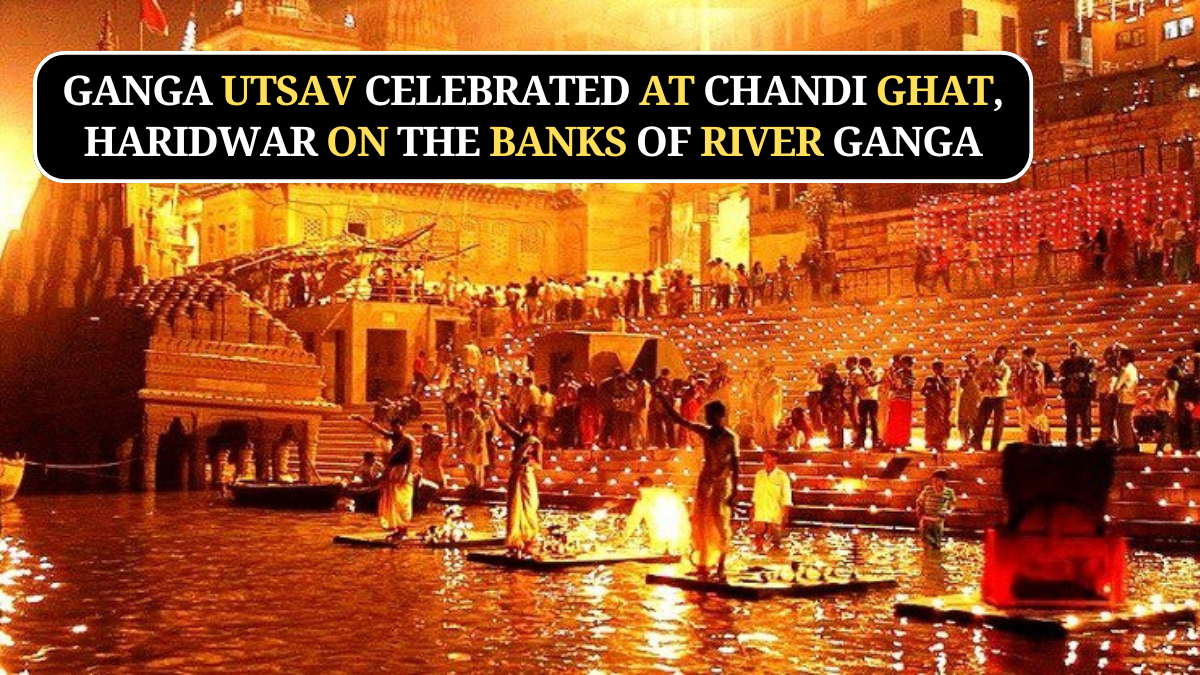Introduction
India’s spiritual and environmental heritage was brought back to life in November 2024, with a lively celebration of the Ganga festival in Haridwar. Each year, Namami is held under the Banner Program for walking, focusing on the Holy Spirit of Ganges of the Festival of the River to live again and maintain, which is for humans.
As pilgrims, travelers, nature lovers and religious leaders were turned into one of the holiest Ghats of Haridwar, the atmosphere was filled with song, lighting, music and an unwavering aura of dedication to the Holy River.
What is the Ganga Festival?
Ganga festival is not just a festival – it is India’s own lifeline, celebration of the Ganges River. The festival marks the day the river was declared the National River of India on November 4, 2008.

With the Ministry of Water Power, National Mission for Clean Ganga (NMCG), it conducts this festival each year to raise awareness of the spiritual significance, nature conservation and historical significance of the river.
The festival is not only seen in large river towns such as Varanasi and Rishikesh, but also in modest cities and Ghats, Chandi Ghat in Haridwar has become a strong center for joy in 2024.
Chandi Ghat—A Divine Enclave
Chandi Ghat is one of the sacred river frozes in Haridwar. Near Ki Pauri, it is charged spiritually and is less crowded, providing a cool atmosphere for rituals and attention sessions.
With its advanced infrastructure, hygiene environment and spiritual environment, Chandi Ghat was chosen as an important place for the Ganga festival in 2024. The natural beauty of the Ghat’s natural beauty, with its historical significance, made it an ideal place to celebrate the river both traditional and modern.
Highlights of the 2024 Celebration
- Ganga Aarti at Sunset
The most captivating activity of the festive occasion was the twilight Ganga Aarti. The devotees filled the steps of the ghat, each carrying diyas (lamps), reciting mantras, and singing in a synchronized prayer to the river. The glowing fires dancing on the peaceful water created a heavenly ambiance that felt full of peace and worship. - Cultural Performances
Classical dance performances, folk songs, and storytelling sessions were conducted on open platforms close to the ghat. Artists from all parts of India performed, with most numbers depicting the mythology and life of Ganga, highlighting its contribution to Indian civilization. - Environmental Awareness Drives
One of the major aims of the festival is education regarding Ganga rejuvenation and sustainability. NGOs, student organizations, and Namami Gange volunteers conducted cleanliness drives, interactive displays, and plastic reduction, sewage management, and purification of water workshops. - Spiritual Discourses and Yoga Sessions
Numerous religious leaders and yoga teachers conducted classes at sunrise, educating the attendees about the value of river protection using Vedic and Yogic principles. These meetings connected the ancient knowledge of India with contemporary sustainability. - Community Participation
Local communities themselves actively took part in arranging stalls for handicrafts, organic products, and traditional cuisine, spreading local culture and livelihood in an environmentally friendly manner. The spirit of inclusiveness of the festival served to bring people of all ages and backgrounds together.
Symbolism and meaning
Ganga is not just a river – it is a symbol of purity, life and salvation in Indian society. It is believed to have come to earth from heaven, and her water is able to wash the sins of humanity. The celebration of the Ganga festival is a sign of praise, and intends to remember its role in bringing back that relationship and saving the river.
By remembering the river with music, rituals and environmentally friendly activities, the festival not only retains traditional values, but also teaches people to include modern protective practices.
Namami Gange’s Role
Namami Gange, which began in 2014, is a flagship project of the Government of India with the aim of cleaning and revitalizing the Ganga River. Its operations extend

- Pollution control
- Riverfront development
- Conservation of biodiversity
- Afforestation
- Public awareness
Ganga Utsav is one of its most outward-facing campaigns, with the aim to inform, inspire, and mobilize people to be active custodians of the Ganga ecosystem.
Messages from Dignitaries
At the 2024 celebration, a number of dignitaries from the Ministry of Jal Shakti, Uttarakhand State Government, and environmental agencies spoke at the gathering. They highlighted:
- The responsibility of every human being in the conservation of rivers
- The importance of the conservation of biodiversity and aquatic life
- The harmony between spiritual purity and cleanliness of the environment
Their communications promoted youth involvement and recognized the efforts of volunteers and community groups.
Gazing Ahead
Ganga Outleveted an example in Chandi Ghat 2024, where spiritual events can reconcile with organic administrations. In the coming times, such events are likely to be environmentally friendly with more inclusive technological facilities (in terms of virtual walking and digital learning) and low carbon footprints.
Read More:- 7th Edition of Ganga Utsav Celebrated With Festive Fervor
The success of the Haridwar festival is a model for river -based festivals throughout India, and confirms the notion that the festivals can be nice and responsible.
conclusion
The Ganga festival was not a celebration on Chandi Ghat – it was an appeal. This reminded us of how the river helped fashion India’s history, feed the earth and clean the soul. From the Holy Aarti to the green driving force, all parts of the incident merged culture and protection.
As the water that gives the Ganges life flows beyond Haridwar and from it, Ganges energy generations on purpose affect and nourish this living heritage.
FAQs:-
What is Ganga Utsav?
Ganga Utsav is a cultural and spiritual festival that honors the River Ganga through music, rituals, and public participation.
What is the significance of Chandi Ghat?
Chandi Ghat is a revered site in Haridwar known for its spiritual atmosphere and traditional Ganga Aarti ceremonies.
When is Ganga Utsav usually celebrated?
Ganga Utsav is typically celebrated in early November, commemorating the declaration of Ganga as the National River.

